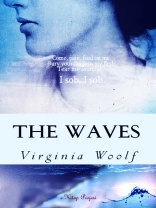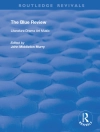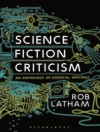The Waves, first published in 1931, is Virginia Woolf’s most experimental novel. It consists of soliloquies spoken by the book’s six characters: Bernard, Susan, Rhoda, Neville, Jinny, and Louis.
Also important is Percival, the seventh character, though readers never hear him speak in his own voice. The soliloquies that span the characters’ lives are broken up by nine brief third-person interludes detailing a coastal scene at varying stages in a day from sunrise to sunset.
As the six characters or ‘voices’ speak Woolf explores concepts of individuality, self and community. Each character is distinct, yet together they compose (as Ida Klitgard has put it) a gestalt about a silent central consciousness.
The sun had not yet risen. The sea was indistinguishable from the sky, except that the sea was slightly creased as if a cloth had wrin-kles in it. Gradually as the sky whitened a dark line lay on the hori-zon dividing the sea from the sky and the grey cloth became barred with thick strokes moving, one after another, beneath the surface, following each other, pursuing each other, perpetually.
As they neared the shore each bar rose, heaped itself, broke and swept a thin veil of white water across the sand. The wave paused, and then drew out again, sighing like a sleeper whose breath comes and goes unconsciously. Gradually the dark bar on the horizon became clear as if the sediment in an old wine-bottle had sunk and left the glass green. Be-hind it, too, the sky cleared as if the white sediment there had sunk, or as if the arm of a woman couched beneath the horizon had raised a lamp and flat bars of white, green and yellow spread across the sky like the blades of a fan.
Then she raised her lamp higher and the air seemed to become fibrous and to tear away from the green surface flickering and flaming in red and yellow fibres like the smoky fire that roars from a bonfire. Gradually the fibres of the burning bonfire were fused into one haze, one incandescence which lifted the weight of the woollen grey sky on top of it and turned it to a million atoms of soft blue. The surface of the sea slowly became transparent and lay rippling and sparkling until the dark stripes were almost rubbed out. Slowly the arm that held the lamp raised it higher and then higher until a broad flame became visible; an arc of fire burnt on the rim of the horizon, and all round it the sea blazed gold.












